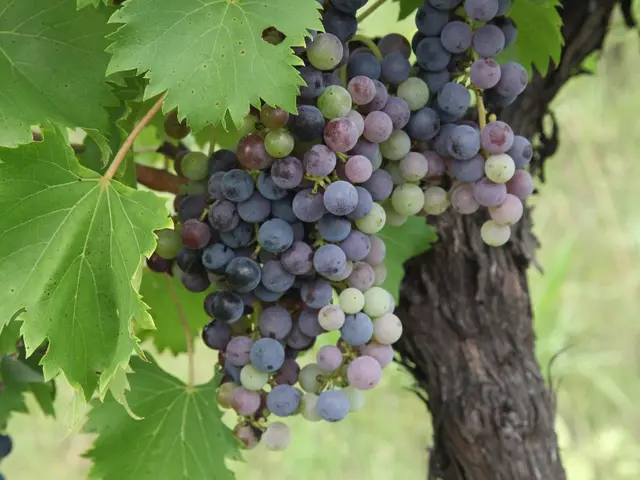Managing Common Vegetable Garden Diseases and Pests: A Comprehensive Guide
Garden Issues: Diseases and Pests in Your Common Vegetable Garden
Vegetable gardens can be a source of fresh, homegrown produce, but they can also face challenges from diseases and pests. This article provides an overview of common vegetable garden diseases, their symptoms, and effective solutions, as well as a list of common pests and their control methods.
Common Vegetable Garden Diseases, Symptoms, and Solutions
Vegetable garden diseases can be categorized as fungal, bacterial, and viral. Each type of disease has distinct symptoms and management strategies.
Fungal diseases such as downy mildew, powdery mildew, blight, rust, and anthracnose can be identified by symptoms like angular, vein-limited chlorotic (yellow) lesions, white fuzzy sporulation on leaf undersides, white powdery spots on leaves, dark irregular spots on leaves, stems, and fruits, causing withering, reddish-brown/orange powdery spots mostly on leaf undersides, and dark sunken lesions on stems, fruits, and leaves, respectively. Effective solutions include using protectant and systemic fungicide sprays such as chlorothalonil, mancozeb, mandipropamid, cyazofamid, oxathiapiprolin, avoiding overhead watering, watering early morning to minimize leaf wetness, removing and destroying heavily infected plant parts regularly, improving airflow by proper plant spacing, trellising, and removing lower leaves, and using organic approaches like neem oil, copper sulfate + lime mixtures, and baking soda sprays for some diseases.
Bacterial diseases such as bacterial leaf spot (Xanthomonas, Pseudomonas) can be identified by small spots on leaves which can coalesce causing large necrotic areas. Effective solutions include avoiding overhead irrigation to reduce spread, removing infected plants and debris, disinfecting tools and hands regularly, using copper-based bactericides in rotation, and ensuring good airflow and avoiding dense planting.
Viral diseases affect various vegetables like cucumbers, squash, turnips, and potatoes and are usually caused by insect vectors. Symptoms include leaf curling, discoloration, stunting, and malformed fruits/leaves. Effective control methods include controlling insect vectors, removing and destroying infected plants, using virus-free seed material, and practicing crop rotation and good garden hygiene.
Common Vegetable Garden Pests and Effective Control Methods
Common vegetable garden pests include aphids, spider mites, mealybugs, thrips, fungus gnats, earwigs, stink bugs, and scale. Each pest has distinct symptoms and control methods.
Aphids are tiny insects that damage plants by feeding and can introduce disease. Young buds and leaves are commonly covered in these pests. Effective control methods include using insecticidal soap, neem oil, garlic spray, and introducing natural predators like ladybugs.
Spider mites can be identified by webbing, yellowing leaves, and fungal and viral diseases. Effective control methods include neem oil, insecticidal soap, and improving humidity control.
Mealybugs are white cottony clusters that feed on sap and cover stems. Effective control methods include alcohol swabs and neem oil spray.
Thrips are almost invisible to the naked eye, but they reduce plant vitality through their feeding activities. Effective control methods include sticky traps, neem spray, and biological control.
Fungus gnats are flying adults that cause root rot fungi. Effective control methods include allowing the soil surface to dry and using yellow sticky traps.
Earwigs do the most damage on seedlings and are unmistakable with their pincers.
Stink Bug pierce plant material and feed on the sap, buds, leaves, and fruit are all susceptible.
Scale are flattened, oval discs that feed on sap. Effective control methods include scraping them off with a knife or using insecticidal soap.
Key Points for Disease and Pest Management
- Early detection and routine scouting (every 3-4 days) are critical for disease and pest management.
- Sanitation such as disinfecting tools and removing diseased foliage reduces disease spread.
- Integrated Pest Management (IPM) approaches that combine cultural, biological, and chemical methods are recommended for sustainable control.
- Avoid overcrowding, ensure good air circulation, and use well-drained soil to reduce fungal and bacterial diseases.
- Crop rotation, weed control, purchasing resistant plants and seeds, and insect control of thrips, aphids, and whitefly help control virus-related diseases.
- Vegetable gardening is a delight that provides healthy food.
This comprehensive approach combining preventative cultural practices, targeted chemical treatments, and biological controls can effectively manage the most common vegetable garden diseases and pests, leading to healthier crops and improved yields.
A homeowner interested in an eco-friendly lifestyle could practice organic gardening by implementing the Integrated Pest Management (IPM) approach recommended for sustainable control, which combines cultural, biological, and chemical methods to manage common vegetable garden pests and diseases. Additionally, home-and-garden enthusiasts with a passion for homegrown produce should care for their garden as a lifestyle choice, following key points such as early detection, sanitation, and appropriate spacing to reduce the spread of diseases and pests, thus enhancing the overall health of their home-and-garden, and the quality of their vegetable lifestyle.






